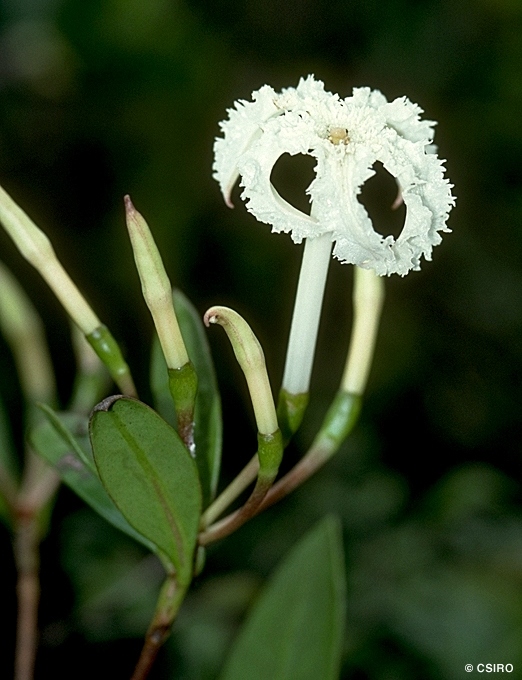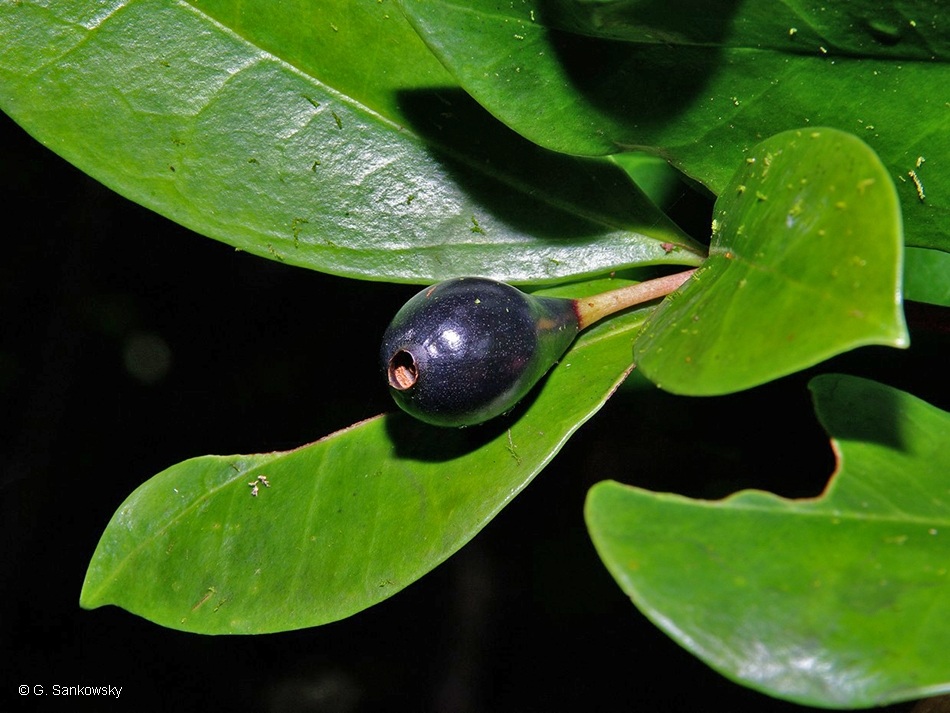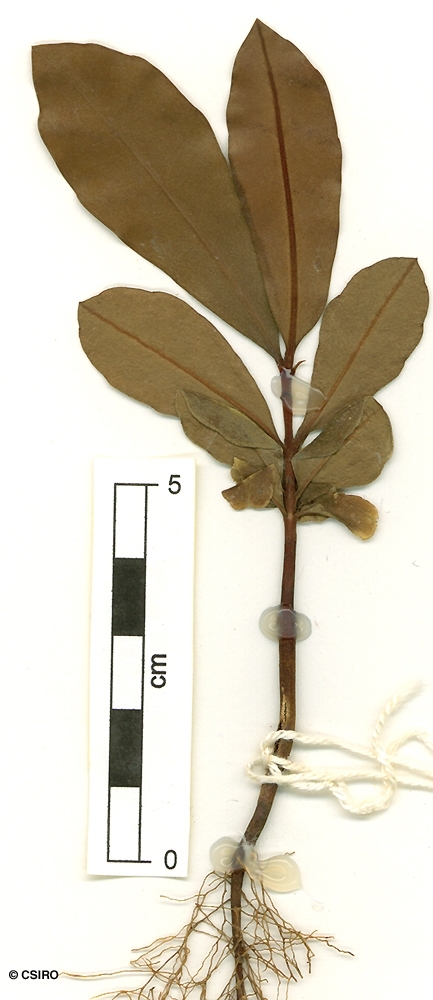Australian Tropical Rainforest Plants - Online edition
Crispiloba disperma (S.Moore) Steenis







Steenis, C.G.G.J. van (1984) Blumea 29: 393.
Crispiloba
Usually flowers and fruits as a sprawling shrub up to 4 m tall but also flowers and fruits when much smaller.
Leaves, if whorled, in whorls of three or four. Petioles about 3-15 mm long, grooved on the upper surface, leaf blades about 5-20 x 2-5 cm. Lateral veins difficult to see on either the upper or lower surfaces of the leaf blade.
Flowers pseudo-terminal rather than strictly terminal. Flowers strongly but pleasantly perfumed. Calyx tube about 2-3 mm long, very shortly 5-toothed at the apex. Corolla lobes about 3 cm long, with margins fimbriate, midrib visible. Corolla tube about 2.5-4.5 cm long, hairy on the inner surface but glabrous on the outer surface. Brown dots and striations usually visible on the inner surface of the corolla tube. Anthers +/- sessile, pollen yellow. Style about 5-6 cm long. Stigma terminal, +/- umbonate.
Cotyledons 3 (?), broadly spathulate, about 10 x 6 mm, margins sparsely toothed, First pair of leaves shortly petiolate. At the tenth leaf stage: leaves shortly petiolate, apex mucronate, base attenuate, lateral veins not apparent. Cataphylls intermingled with the true leaves. Petioles somewhat decurrent on the stems. Dark reddish brown hairs usually visible in the leaf axils. Seed germination time 183 days.
Sometimes forms dense thicket of plants and suckers in the understory. Originally this species was described as a Randia disperma S.Moore. This meant that a competent and experienced taxonomist like S. Moore had placed the specimen in the wrong family. There is a message here for all taxonomists but we may also find solace in the fact that perhaps our own mistakes may be forgiven.
Randia disperma S. Moore, J. Bot. 55: 305(1917), Type: Queensland: Bellenden Ker, on long ridge; undergrowth in forest, 610 m, Mar. 1914, L.S. Gibbs 6307 (BM 001041347; BM 001041348; K 000779434; BRI AQ0570009; NSW 650108, images seen).





